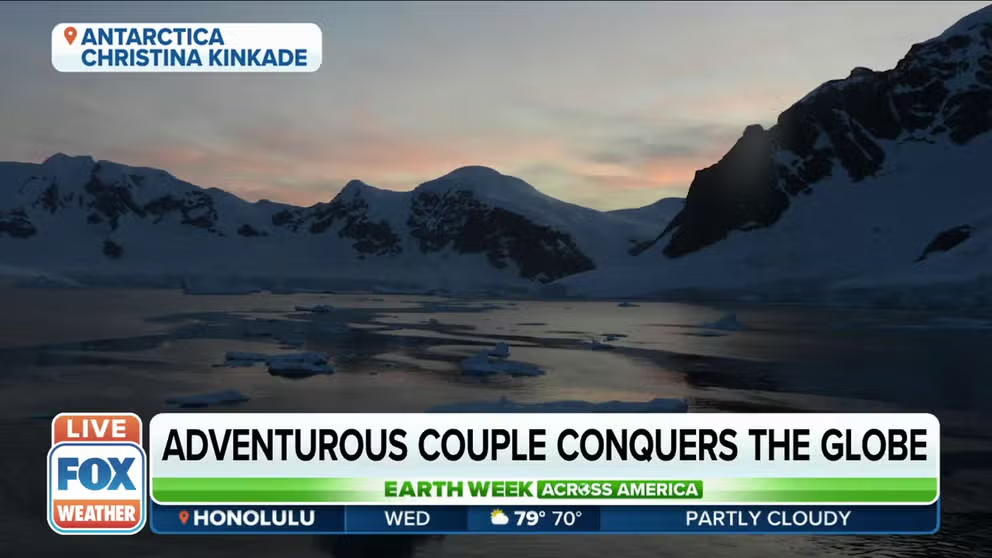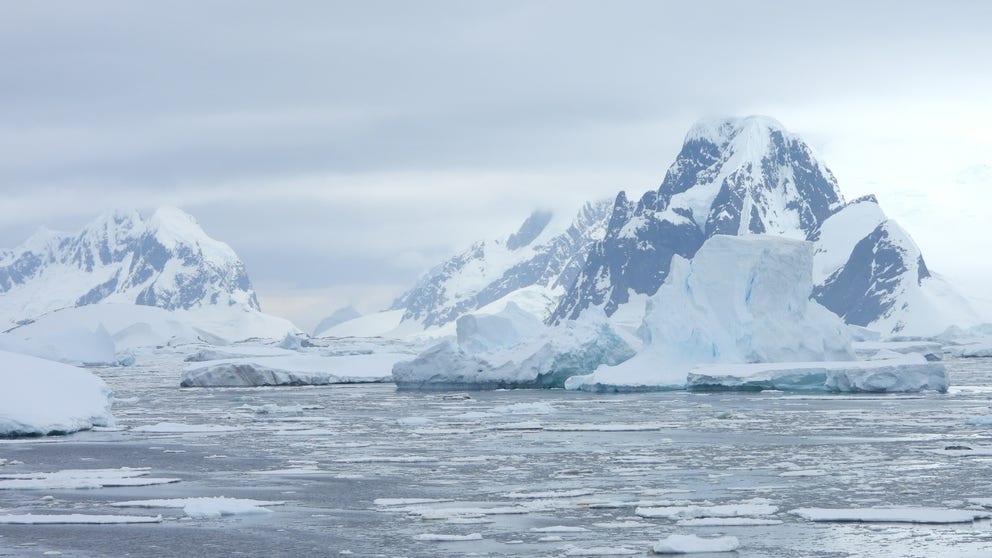Journey to the bottom of the Earth: Couple tours Antarctica's frozen wilderness
A Boston-area couple just spent over two weeks exploring the frozen landscape of Antarctica, showcasing a harsh but incredible part of the planet few ever get to see.
Boston couple explores Antarctica, travels to all seven continents
Mark and Dr. Christina Kinkade share their adventure after exploring the frozen landscape of Antarctica. The Boston couple have now traveled all seven continents.
BOSTON - Taking a weeks-long vacation strolling the beaches and spying the local wildlife might spur visions of a tropical paradise, but not for one couple who recently returned from a once-in-a-lifetime adventure to a remote place on Earth few ever get to see: Antarctica.
According to the International Association for Antarctica Tour Operators, only about 74,000 people visited Antarctica over seven months in late 2019 into early 2020 during its summer, and roughly 18,000 of those never set foot on the continent.
For Mark Kinkade, it was a birthday gift from his wife Christina to reach the final continent on his bucket list of touching all seven, but it was also a chance for them to see how nature thrives amid one of the harshest climates on the planet.
The continent holds the world record for the coldest temperature measured at -128.6F, and its average winter temperature at the South Pole is -70F. So you might think Antarctica would be a place where it’s a blizzard every day. But in the summer, the weather in the northern coastal areas can be nicer than a New England winter.
7 Facts About Antarctica Weather
Learn 7 different ways Antarctica weather is unique in its spot at the bottom of Planet Earth.
"The temperature while we were there was probably in the 30s most days," Mark Kinkade said from their home in eastern Massachusetts. "Actually, it was warmer where we were than it was in Boston." (That's because while they were off exploring the Antarctic, Boston was hit by the Blizzard of '22.)
The trip begins with a long flight to South America, where they boarded their ship to cross the dreaded Drake's Passage between Cape Horn and the northern tip of Antarctica. The alignment of geography and currents makes for the world's roughest waters. The crew refers to it as the "Drake Shake."
"Drake Passage is not for the weak of heart," Christina Kinkade said. Large swells and rough seas made for a very bumpy sail -- and that was considered a calm passage. "Luckily it wasn't stormy because if it were stormy it would have been a lot worse."
Massive Mountains of Ice
The ship made it south of the Antarctic Circle and sailed to its first stop -- around 68 degrees South latitude. It would be the southernmost point of their journey and about the southern extent of any wildlife.
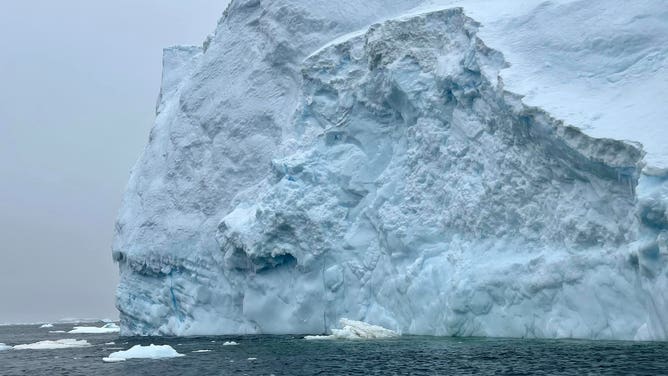
(Christina Kinkade)
The crew took passengers on 20-foot rigid inflatable "Zodiac" boats for tours around the massive icebergs dotting the sea.
"It really puts in perspective what you're seeing because you look at a picture and you're like, 'Oh cool, it's an iceberg. Got it,' " Christina Kinkade said. "And when you're next to some of these bergs - the sheer magnitude of these blocks of ice is unreal."
Christina took a photo of one of the tour boats next to an iceberg to give perspective:
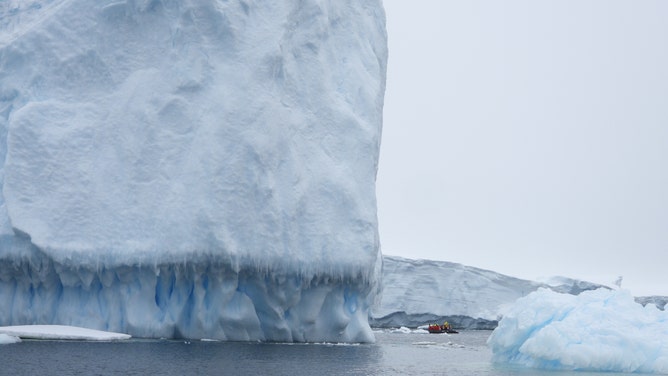
A 20-foot Zodiac rigid inflatable boat sits alongside a towering iceberg in Antarctica.
(Christina Kinkade)
But they couldn't get too close -- icebergs have sections break off all the time, plus icebergs melt first from the bottom. "Usually, after so long, they can flip over because it's melted out from underneath, so their center of gravity will change," Mark Kinkade said.
They described the surreal scene of being in such a desolate place otherwise devoid of any sound, except surrounded by the serenade of countless icebergs cracking and calving.
"You know that sound when you put ice in your beverage and that crackling sound?" Christina said. "So just kind of picture that all over."
Time Capsule Back to 1947
Their first land excursion was to Stonington Island, home to two long-abandoned American and British research stations. The British station was too dilapidated to allow safe entry, but the American base allowed tourists inside.
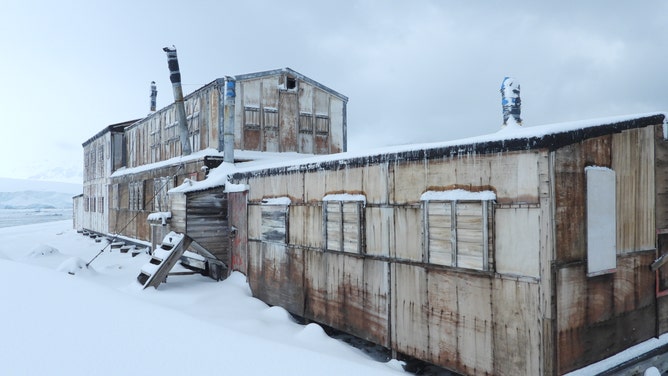
(Christina Kinkade)
The American base was used during World War II but was left in 1947.
"They clean it every once in a while, but they leave everything as it was when it was abandoned," Christina Kinkade said. "It's real minimal and makes you wonder how they managed to heat it property and like: 'How did someone live there?' It was really cool to see."
COUNT PENGUINS IN ANTARCTICA? THIS REMOTE JOB'S CHILLING HISTORY IS NOT FOR EVERYONE
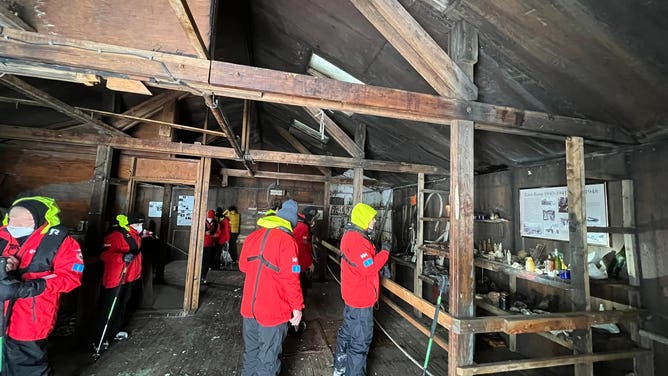
(Christina Kinkade)
Penguins: So cute! But…
You can't think of Antarctica without thinking of penguins, and there were plenty to be found. The Kinkades saw three types -- Adelie, Gentoo and the Chinstrap.
And while they were just as cute as advertised, there's an experience that the photos and movies can't convey.
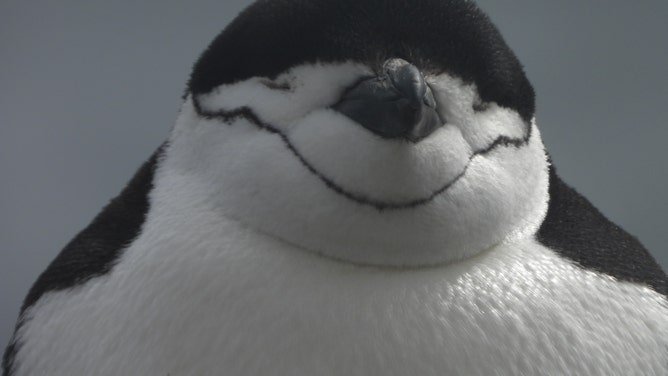
(Christina Kinkade)
"Something you don't think about but makes sense in retrospect: It's very stinky," Mark said.
"Oh my God!" Christina chimed in. "The penguin rookery. Holy smokes."
"We could smell it from the ship even before we got on land," Mark said. "There like hundreds if not thousands of birds around doing…bird things," Mark said.
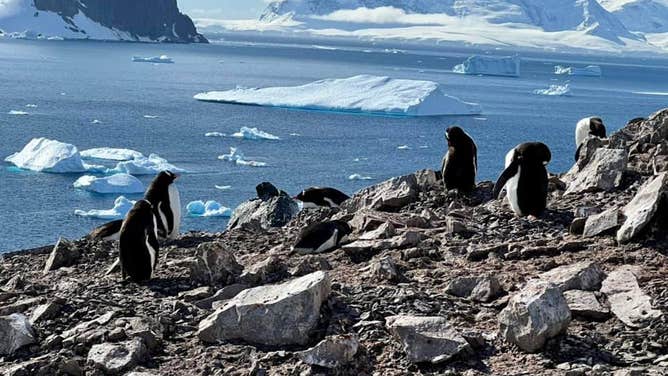
(Christina Kinkade)
They said one of her favorite stops was at Yankee Harbor, where they could get the closest to the penguins.
"There were some baby penguins who were like five weeks old," Mark said. "But there was a mom who was feeding them--- feeding one of her kids… and she got sick of feeding. And so she turned and started running away with the little baby following after -- just running after her.
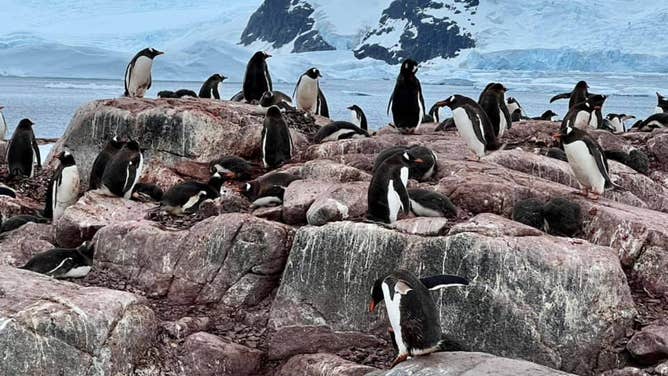
(Christina Kinkade)
The guides stress that passengers must stay on marked paths.
"Part of it is that you don't want to put a big boot hole in the snow where the penguins walk by," Mark said. "Because if they come and fall into your foot hole, they're not going to get out."
Beware the seals
While you could get reasonably close to the penguins, everyone was advised to stay at least 50 feet from the fur seals, which can become somewhat aggressive. Guides carry sticks to make noise and scare them off.
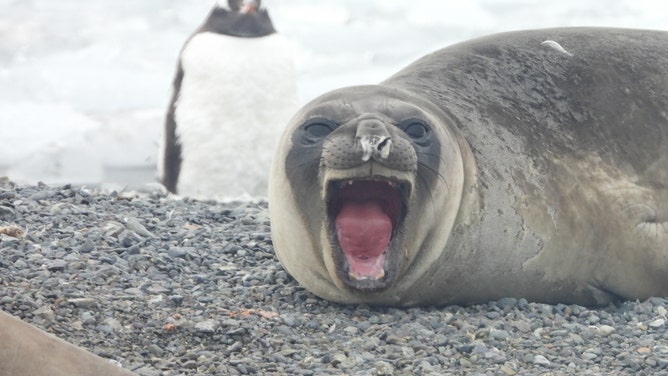
(Christina Kinkade)
One of Christina's favorite memories was watching two seals get a little chirpy.
"There were adolescent fur seals -- (essentially) teenage boys trying to prop up and (claim) who's tougher, "she said. "You know, they're pushing each other's buttons. And here's little penguins waddling around right near all of it -- really neat to see all of that."
Not your typical beach day…
One of the more harrowing moments of the trip came when they visited Deception Island, an old volcanic caldera.
"We got there in the morning, and it was very nice and clear," Mark said. Their tour made it ashore, and they spent about a half-hour exploring the volcano.
"Then the wind started kicking up… and we ended up with hurricane-force gusts up to 80 mph," he said. "You just basically sit on the ground with your back to the wind and wait for the storm to pass."

(Christina Kinkade)
It took about two hours for the storm to abate, and allowed their boat to return to the ship.
Epic 'Polar Bear' Plunge
Yes, Polar Bears are at the other pole, but that didn't stop Mark from taking part in an epic version of the "Polar Bear Plunge." At their stop along the Danfo Islands, they allowed the group to swim in the Antarctic Sea.
Water temperature: 37.4 degrees.
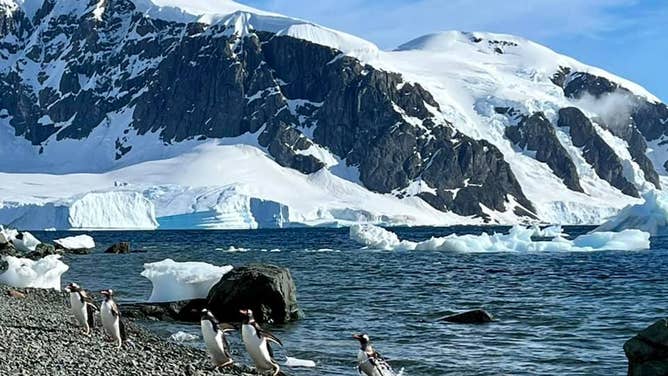
(Christina Kinkade)
"It was hardcore," Christina said. "He was using the ice that was right there (in the water) to balance himself."
"That was pretty cool," Mark said, likely not intending the pun.
If you go: Plan for adventure…and Plan B, or C, or D, E or F…
Antarctica is essentially an international reserve that requires respect for the land. Mark says tourist groups take great care to ensure that not only is the natural beauty of Antarctica remains protected but pristine.
"You don't bring your own boots," Mark said. They will give you boots to wear on the island, and when you come back, they will have you put the boots through special disinfectant to make sure you're not bringing any fauna off.
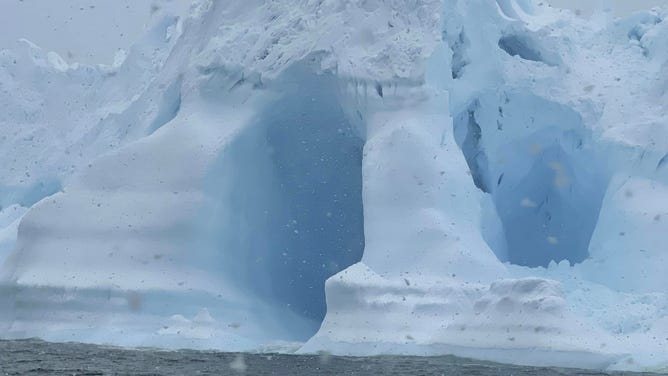
(Christina Kinkade)
And just as your trip begins, all passengers must have their outerwear vacuumed with a special HEPA filter to get rid of any dust or pollen. "Just to make sure you're not bringing any foreign fauna into Antarctica, so they're respectful to know you're going into a kind of national park, and it's going to be very protected."
They also suggest that you go in with the mindset that all scheduled plans are tentative and remain flexible on your expectations.
"They warned us every day you start with 'Plan A,' but based on weather and everything, you might see 'Plan B' or 'Plan C,' " Mark said.
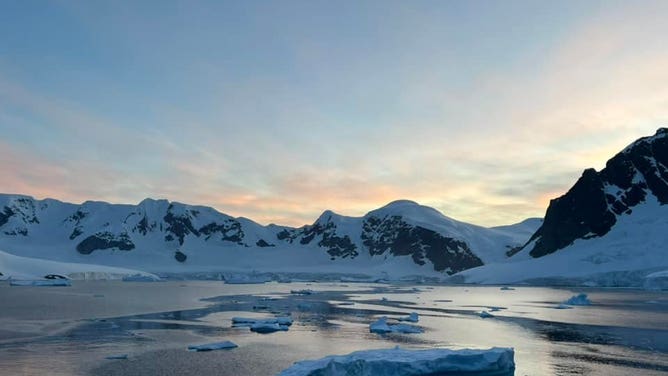
(Christina Kinkade)
"It's truly an expedition," Christina added. "There are best-laid plans…and you've got to go with the flow."
"Don't go there thinking, 'OK, we'll hit every stop.' It's really dependent on the weather and what's happening that day," Mark said. "Go to enjoy what you do get to do."
